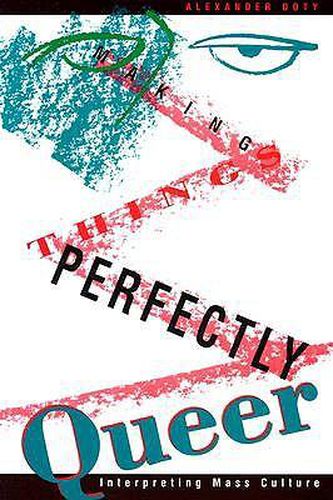Readings Newsletter
Become a Readings Member to make your shopping experience even easier.
Sign in or sign up for free!
You’re not far away from qualifying for FREE standard shipping within Australia
You’ve qualified for FREE standard shipping within Australia
The cart is loading…






As a concept, queerness describes a cultural common ground between gays, lesbians, bisexuals, and other non-straights, but it also suggests a diverse and often uncategorizable cultural space that is everywhere in mass culture. Whether recognized or denied, queerness is an approach to mass culture that is shared by people with every kind of sexual self-definition. In Making Things Perfectly Queer , Alexander Doty argues that films, television, and other forms of mass culture consistently elicit a wide range of queer responses, and suggests a framework for interpreting mass culture that stands as a corrective for many standard cultural approaches. Doty demonstrates how queer readings can be - and are - performed by examining star images like Jack Benny and Pee-wee Herman , women-centered sitcoms like Laverne and Shirley and Designing Women , film directors like George Cukor and Dorothy Arzner, and genres like the musical. In developing these readings, he suggests that queerness, not straightness, just might be the most pervasive sexual dynamic at work in mass culture production and reception.
$9.00 standard shipping within Australia
FREE standard shipping within Australia for orders over $100.00
Express & International shipping calculated at checkout
As a concept, queerness describes a cultural common ground between gays, lesbians, bisexuals, and other non-straights, but it also suggests a diverse and often uncategorizable cultural space that is everywhere in mass culture. Whether recognized or denied, queerness is an approach to mass culture that is shared by people with every kind of sexual self-definition. In Making Things Perfectly Queer , Alexander Doty argues that films, television, and other forms of mass culture consistently elicit a wide range of queer responses, and suggests a framework for interpreting mass culture that stands as a corrective for many standard cultural approaches. Doty demonstrates how queer readings can be - and are - performed by examining star images like Jack Benny and Pee-wee Herman , women-centered sitcoms like Laverne and Shirley and Designing Women , film directors like George Cukor and Dorothy Arzner, and genres like the musical. In developing these readings, he suggests that queerness, not straightness, just might be the most pervasive sexual dynamic at work in mass culture production and reception.